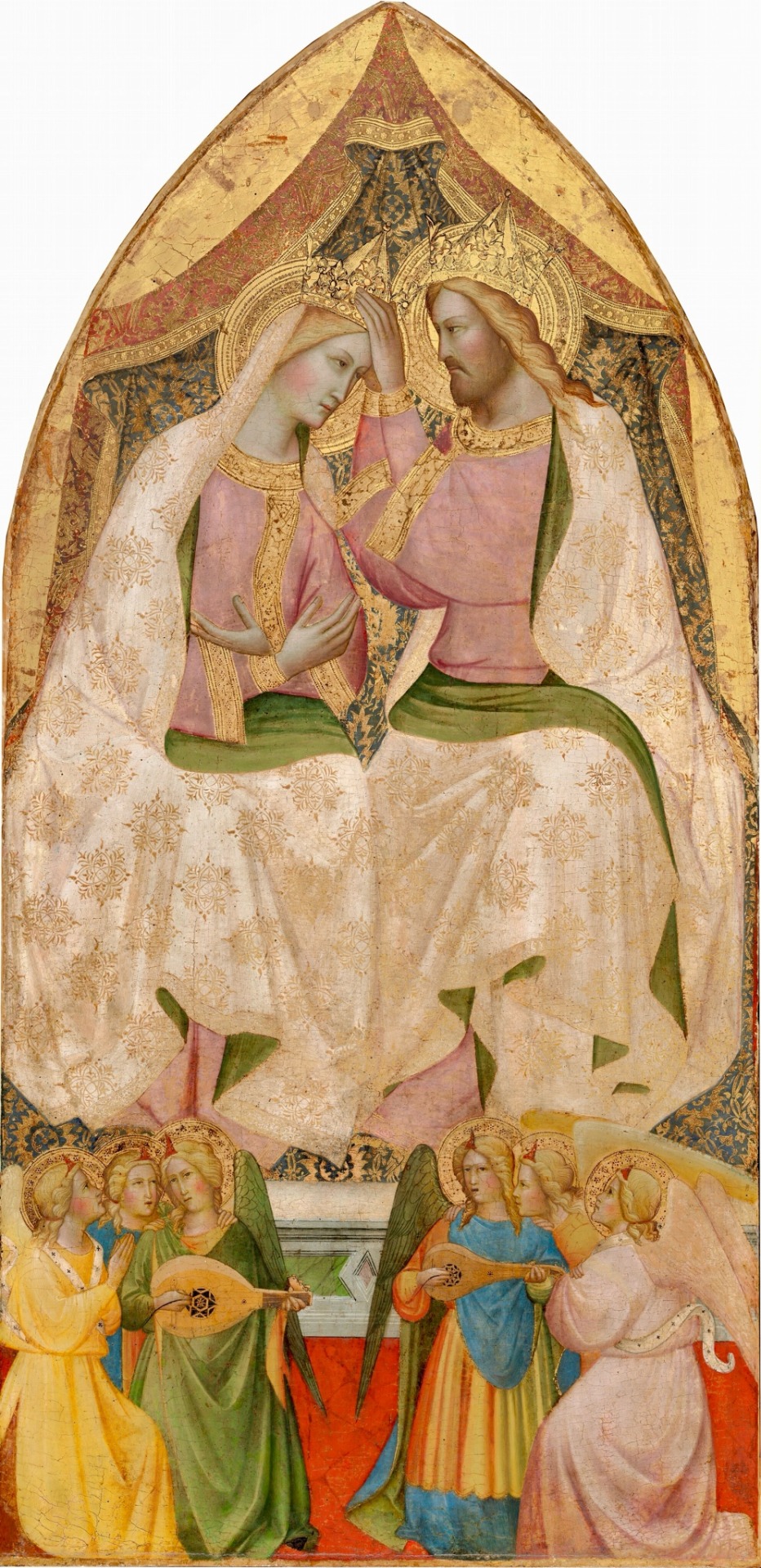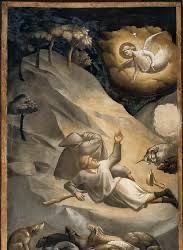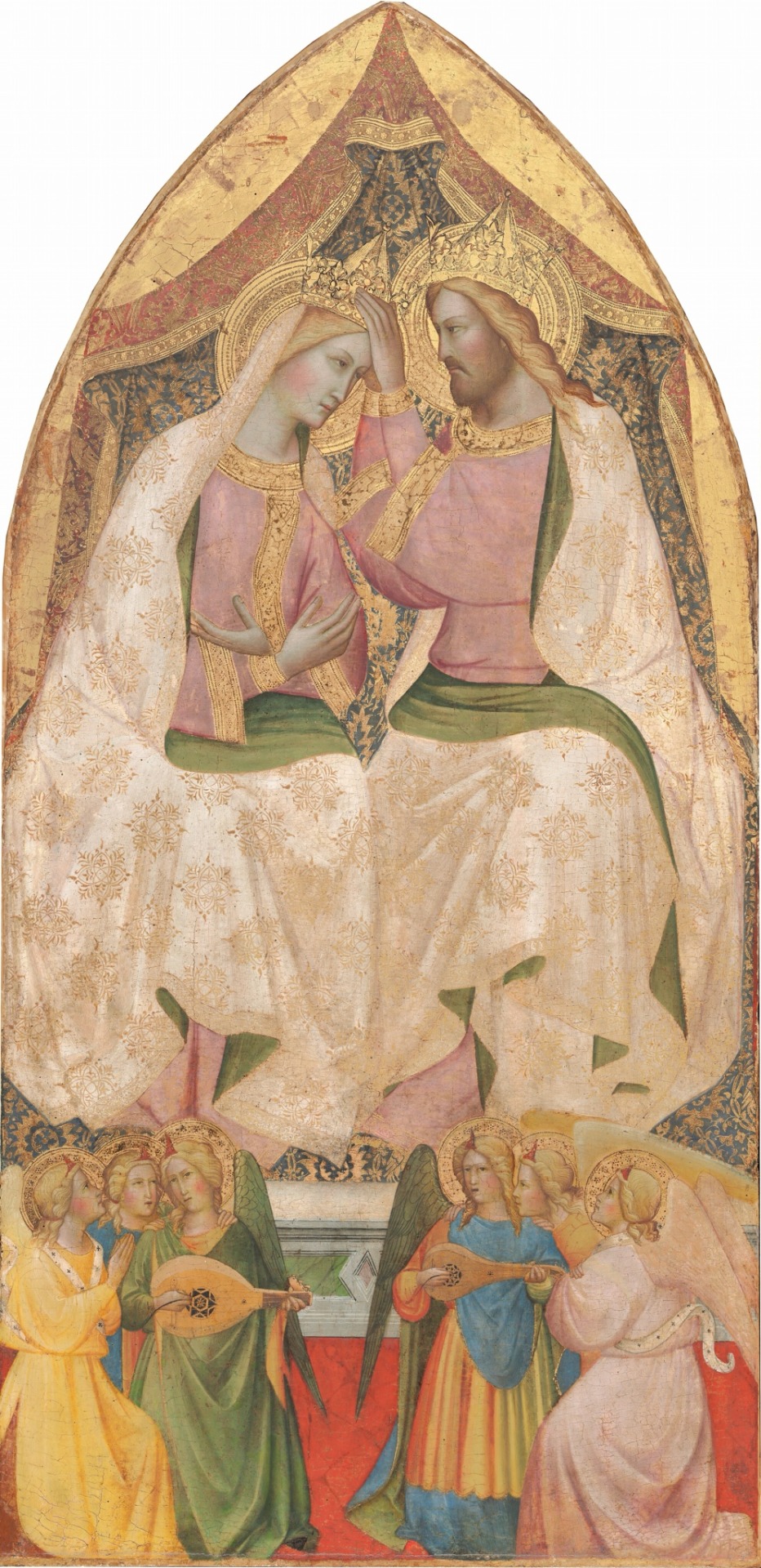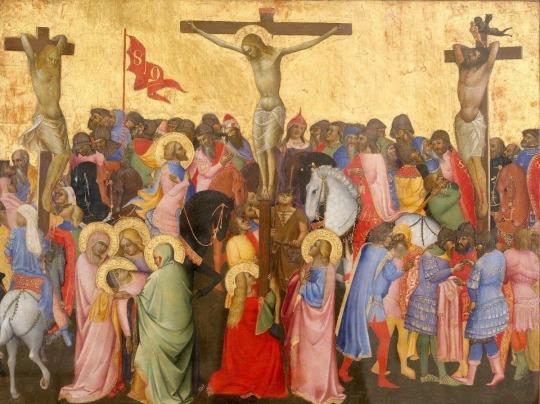#Agnolo Gaddi
Text
La peinture italienne ancienne : Des influences byzantines à la gloire de la Renaissance
La peinture italienne ancienne : Des influences byzantines à la gloire de la Renaissance
Découvrez notre collection d’histoire de l’art
Le texte ci-dessous est l’extrait du livre Les Primitifs Italien (ISBN: 9781783103713), écrit par Joseph Archer Crowe, Giovanni Battista Cavalcaselle et Anna Jameson, publié par Parkstone International.
Les premières peintures italiennes constituent un chapitre important de l’histoire de l’art occidental, jetant les bases de la Renaissance…

View On WordPress
#Agnolo Gaddi#anthropomorphisme#Art#Art médiéval#art religieux#book#Byzantin#Cimabue#Duccio#ebook#Florence#Giotto di Bondone#Gothique#histoire de l&039;art#Italië#Italien#kindle book#Les Primitifs Italien#Lippo Memmi#livre#livre Kindle#livre religieux#naturalisme#Parkstone#Parkstone International#peintre#peinture#Pietro Lorenzetti#postaday#postaweek
1 note
·
View note
Text

The Coronation of the Virgin by Agnolo Gaddi, Italian (Florence), ca. 1390
4 notes
·
View notes
Text

Agnolo Gaddi, Saint Margaret and the Dragon, c. 1390
9 notes
·
View notes
Text

AGNOLO GADDI (Florencia hacia 1350 – 1396)
La Virgen y el Niño con diez ángeles entre los Santos Benito, Pedro, Juan Bautista y Miniato
hacia 1375-1385
Témpera sobre madera, fondo de oro
Inventario Contini Bonacossi n. 29
El retablo es el resultado de un moderno ensamblaje entre dos obras distintas de Agnolo Gaddi: las figuras de los santos provienen de un políptico ejecutado para los monjes olivetanos de la iglesia de San Miniato en Florencia, mientras que la Virgen y el Niño coronados por ángeles formaban parte de otro conjunto.
Las palabras que dirigió a Cristo están inscritas en el libro de Pedro: Dominetecumparatus sum et incarcerem et in mortem ire (Señor, estoy dispuesto a ir a la cárcel y morir por ti), tomadas del Evangelio de Lucas.
Información de la Gallerie degli Uffizi, imagen/es de mi autoría.
2 notes
·
View notes
Text

"The Coronation of the Virgin with Six Angels" by Agnolo Gaddi (1390)
3 notes
·
View notes
Text
Taddeo Gaddi (father of Agnolo Gaddi), “Annunciation to the Shepherds”, “after 1328”

0 notes
Text

Agnolo Gaddi, detail, Crucifixtion, 1390 Devil takes the thief’s soul.
1 note
·
View note
Photo

Agnolo Gaddi - Saint Julian, Saint James and Saint Michael. 1390
17 notes
·
View notes
Text
Early Italian Painting: From Byzantine influences to Renaissance glory
Early Italian Painting: From Byzantine influences to Renaissance glory
Explore our Art History collection
The text below is the excerpt of the book Early Italian Painting (ISBN: 9781783103928), written by Joseph Archer Crowe, Giovanni Battista Cavalcaselle and Anna Jameson, published by Parkstone International.
Early Italian paintings form a significant chapter in the history of Western art, laying the foundation for the Italian Renaissance and influencing…

View On WordPress
#Agnolo Gaddi#Art#Art History#book#Byzantine#Cimabue#Duccio#Early Italian Painting#ebook#Florence#Giotto di Bondone#Gothic#Italian#Italian Renaissance#Italy#kindle book#Lippo Memmi#Medieval Art#Naturalism#painter#Parkstone#Parkstone International#Pietro Lorenzetti#postaday#postaweek#religious#religious art#religious book#religious icons#Renaissance
0 notes
Photo

Miller defines art as “the application of imagination, skill, and style to matter, movement and sound that goes beyond what is purely practical” (pg. 301). The photo below was taken at the National Gallery of Art in Washington DC. The triptych between the two statues is Madonna and Child with Saints Andrew, Benedict, Bernard, and Catherine of Alexandria with Angelsby Agnolo Gaddi. The left panel of the triptych is Saint Andrew and Saint Benedict with the Archangel Gabriel, the center panel is Madonna and Child Enthroned with Twelve Angels, and with the Blessing Christ and the left panel is Saint Bernard and Saint Catherine of Alexandria with the Virgin of the Annunciation. The left statue flanking the triptych is The Archangel Gabriel and the right statue is The Virgin Annunciat, both sculpted by Pisan. This is an example of art as the triptych does not serve a practical purpose but was rather made as a form of religious expression. At the time when these pieces were made during the 14thcentury, ordinary people definitely would not have had the financial resources or need to have these in their home.
Miller defines museum as “an institution that collects, preserves, interprets and displays objects on a regular basis” (pg 310). The National Gallery of Art collects and preserves nearly 4,000 paintings, 3,000 sculptures, 70,000 prints, 31,000 and 15,000 photographs, the majority of which are by artists of European or American nationality (nga.gov). They also feature an exhibit on decorative arts. The National Gallery of Art is an example of a museum due to their large collection of art, much of which is on display and is available for public viewing. If I were to do further anthropological research, specifically within the subfield of museum anthropology, I would ask the curators why there isn’t larger representation of non-western cultures at the NGA. According to their website, the nationalities of artists with the largest representation in the museum are American (6,252 artists), French (2,092 artists) and Italian (1,520 artists). Furthermore, there are only three nationalities that are not western that have representation at the NGA: Chinese (22 artists), Mexican (33 artists), and Japanese (87 artists).
#anth1002#art#musuem#national gallery of art#washington dc#byzantine art#14th century art#madonna and child#st andrew#archangel gabriel#st bernard#st catherine of alexandria#pisan#agnolo gaddi#religion#christianity#religious expression#italy#italian art#representation#european art#american art#musuem anthropology#paintings#scluptures#photographs#prints#fine art#indigo_stegner
2 notes
·
View notes
Text

Agnolo Gaddi, The coronation of the Virgin, c. 1380-1385 x
0 notes
Text

Agnolo Gaddi (Florencia, c. 1350 – 1396)
Crucifixión
Alrededor de 1390-1396
Témpera sobre madera
Inventario 1890 no. 464
A pesar del pequeño tamaño de la tabla, el tema de la Crucifixión de Cristo se enriquece con la representación de episodios secundarios y de muchas figuras. Además de los dos ladrones crucificados, reconocemos a María Magdalena y al apóstol Juan al pie de la cruz, el soldado romano Longino. A la izquierda se representa el desmayo de la Virgen, sostenida por piadosas mujeres, mientras que a la derecha los soldados tocan el manto de Cristo.
Adquirido para los Uffizi en 1860 a los hermanos Metzger, marchantes de arte.
Información de la Gallerie degli Uffizi, imagen mía.
2 notes
·
View notes
Photo

Agnolo Gaddi (1350-1396)
Dream of Emperor Heraclius, 1385-87
97 notes
·
View notes
Text
Agnolo Gaddi, “Coronation of the Virgin”, circa 1370

0 notes
Photo

MWW Artwork of the Day (7/30/18)
Agnolo Gaddi (Florentine, 1340-1396)
Retrieval and Trial of the Three Crosses (1385-87)
Fresco Cycle: Legend of the True Cross
Chancel Chapel, Santa Croce, Florence
After Emperor Constantine's victory over his rival Maxentius, Constantine's mother, Helena, heads to Jerusalem in order to seek the True Cross. The location where it has been hidden can be learned only with the compelled assistance of a Jew named Judas. As the Cross is unearthed, the crosses of the two thieves are also discovered. The True Cross is identified when a dead youth who is being carried past on a bier is brought to life again after the three crosses, one after the other, are laid over him.
The order in which the images are to be read differs from that in the other frescoes: the recovery of the crosses is shown at the right, and on the left is the identification of the True Cross. Extending behind this is a landscape of a markedly bucolic character, a world that appears to be completely untouched by the events occurring in the foreground.
For the complete cycle of frescos, plus other works by this artist, see the MWW gallery:
* Trecento - The Italian Masters of the 14th c.
2 notes
·
View notes
